Apples are not as simple as they seem. Perhaps no other fruit has left such a large mark in world history. The first cultivated apples appeared in ancient Rus in the 11th century during the reign of Yaroslav the Wise. It is believed that the first apple orchard was planted in the Kyiv-Pechersk Lavra.
Planting orchards was a favorite pastime in ancient Rus. Even the first princes of Vladimir, Suzdal and Moscow surrounded their cities with apple, pear and cherry orchards. Fruit trees were planted in monasteries and royal estates. The gardeners remained anonymous for the most part, although there were a few exceptions. Information about one of them managed to survive and come down to us in a 17th century document called “Complaint to Tsar Mikhail Fedorovich From the Gardener Nazar Ivanov.”
“Your servant Nazar Ivanov beseeches Your Majesty Mikhail Fedorovich. By your sovereign decree I was taken from Your Majesty’s journeymen to do gardening. I searched all the orchards for the best apple trees for you, My Lord. At your favor, I made an orchard in the village of Rubtsovo and grafted 210 apple cuttings. Some of the apple trees, My Lord, were eaten by moles, and I drove those moles away.” The gardener didn’t ask the tsar for much. The problem was that he was still considered one of the tsar’s journeymen, and one of their duties was to haul on their carts tents and any property for the sovereign when the tsar traveled or went on campaigns. So Nazar was performing two services for the tsar and asked to have only one: the orchard. The tsar refused him: the orchard was temporary, he said. But he did order that Nazar be rewarded with a piece of “fine cloth.”
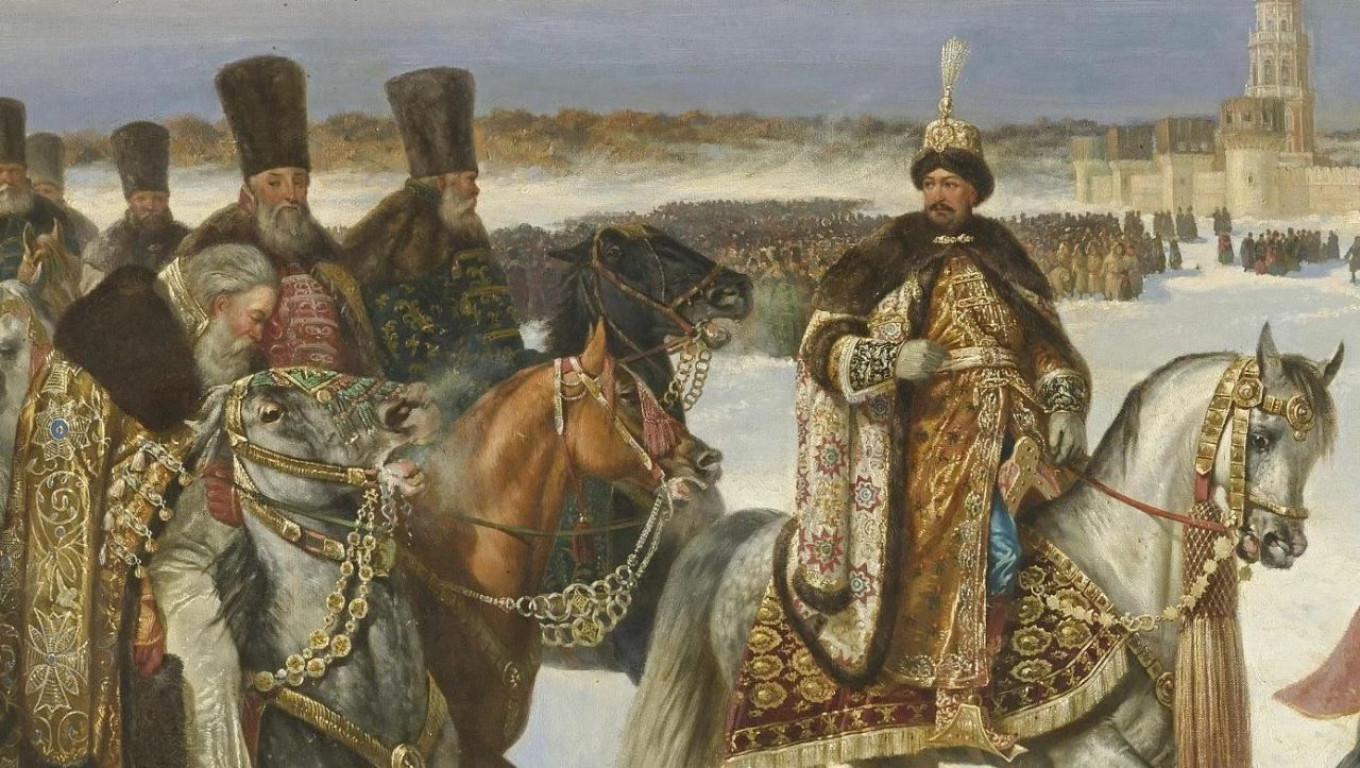
Russia even has an apple holiday, called “Apple Feast of the Savior.” It is celebrated on August 19, which is the day that the Transfiguration of the Savior is celebrated in the Russian Orthodox church calendar. This is the day described in the Bible when Jesus ascends Mount Tabor with three of his disciples. On the mountaintop, they see Jesus shining with bright rays of light. And then a bright cloud appears and they hear a voice from the cloud: “This is my beloved Son, with whom I am well pleased.”
On the Feast of the Transfiguration it was customary to consecrate grapes and ears of wheat in churches. But where grapes did not grow, apples were consecrated instead, and the church holiday began to be called “The Apple Feast of the Savior.” It was believed that apples from the new harvest shouldn’t be eaten until that day. Later they could eat all they wanted — in fact there was an expression “even a beggar eats an apple on the second Feast of the Savior.”
If you’re confused about church holidays, you should know that this is, indeed, the second Feast of the Savior celebrated in the Orthodox Church. August 14 is the Honey Feast of the Savior and August 29 is the Bread Feast of the Savior.
On the Apple Feast of the Savior the entire porch of a parish church would be filled with tables piled with mountains of apples. After the service dinner the priest would bless the fruit and read a prayer over them. The parishioners would leave some of their baskets of apples for the church. After the service the priest and the churchgoers would break their fast with these fresh apples.
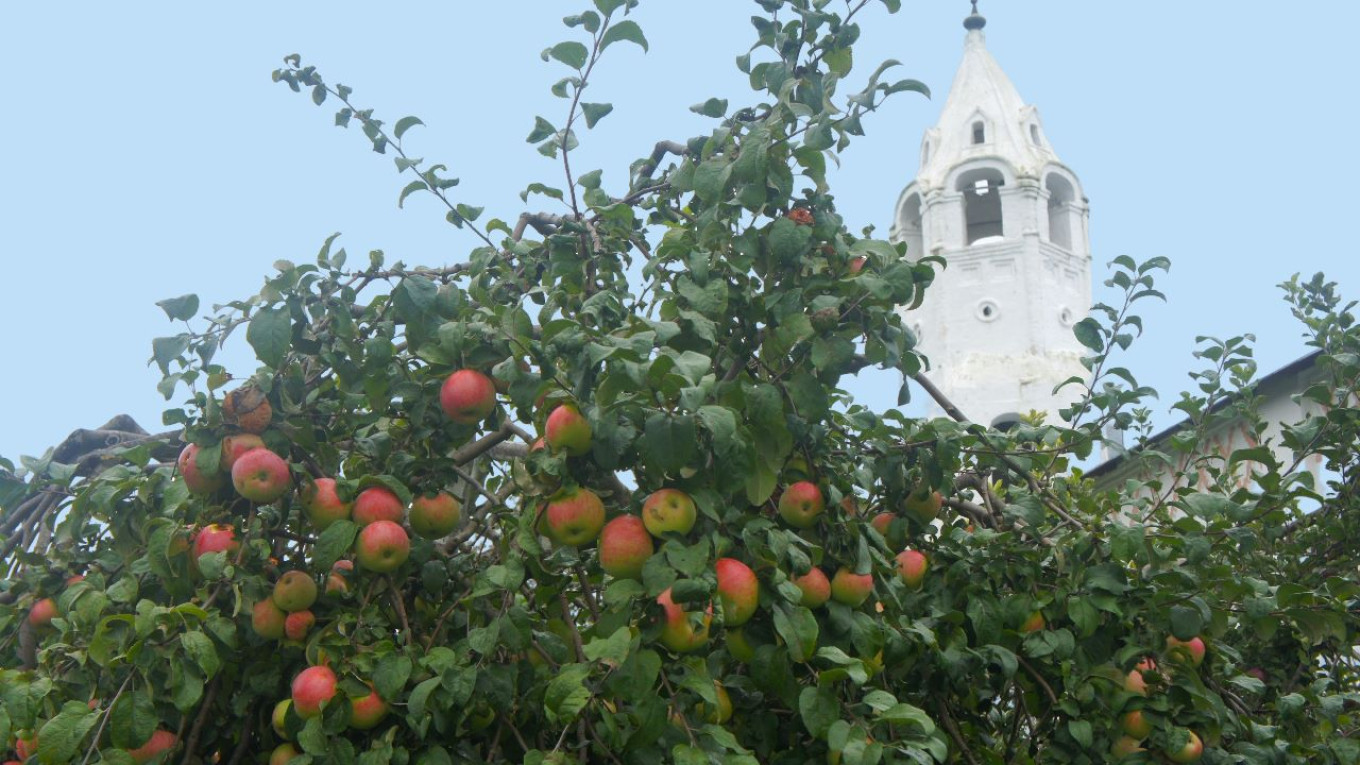
Apple season is quite long, stretching from August to November when you take into account both early and late varieties. If apples are stored properly, they will last for several months. Today imports from abroad erase the boundary between winter and summer. But on the other hand, with fresh apples available all year, our culinary imagination gets dulled.
But apples are one of the most versatile products in the kitchen. There is almost nothing you can’t make with them. When they are fresh, we just eat them. In the old days, the most common way to preserve them was with simple fermentation. Apples were free or cheap, and every peasant could easily put up a barrel or two of soused apples for the winter.
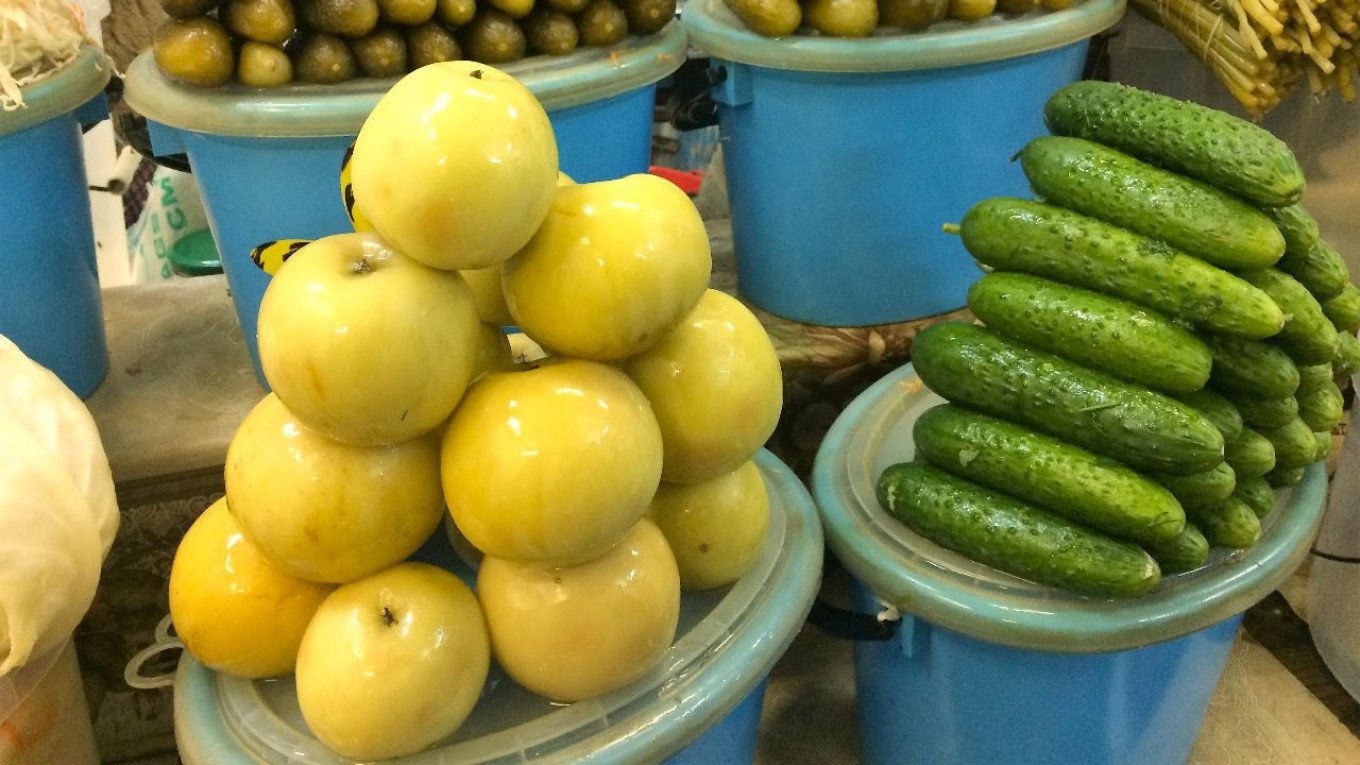
People celebrated the Apple Feast of the Savior with baked apples. Home cooks would core them, fill them with honey, sprinkle them with sugar and bake them in the oven. They also made apple pies. Although the holiday falls during the strict Dormition Fast, fish and wine are allowed on the Feast of Transfiguration. So this day was a truely festive and delicious feast.
Apple pie is one of the most widespread pies in Russian cuisine. Each province and region has its own recipes, but although they are all different, they are all fairly easy to make. We know that everyone wants to make something quick that is sure to be good. That’s our specialty: we test a recipe ourselves, and if we like it, we offer it to our readers. Here’s one that we can definitely recommend. You’ll find it easy to make, and the result will be delicious.
Apple Almond Pie
This is a very festive and fancy-looking pie. Use tart apples, which will keep their shape better.
Ingredients
- 500 g (1 lb) puff pastry
- 400-500 g (about 1 lb) tart, firm apples
- 2 tsp flour
For the frangipane
- 80 g (2.8 oz) almond flour
- 60 g (2.1 oz) sugar
- 60 g (2.1 oz) room temperature butter
- 1 egg
- vanilla extract, or lemon or orange zest
- 2 tsp sugar for sprinkling on the pie
- 1 egg+1 tbsp water or milk to for the top of the pie
Instructions
- Preheat oven to 190°C / 375°F.
- Prepare the frangipane: cream the butter with the sugar.
- Alternate adding egg and almond flour, then stir until smooth.
- Add a dash of vanilla extract and/or orange or lemon zest, which are good in frangipane — and with apples, too.
- Peel the apples, cut in half, remove the core and cut into thin half-circles.
- Roll out half of the puff pastry into a square of about 30-32 cm (12-14 inches) per side.
- Take a bowl with a diameter of 28 cm (about 11 inches) a press it open-side down gently into the dough to mark a circle.
- Cut away the dough outside the circle.
- Spread the frangipane evenly on the dough, leaving a border.
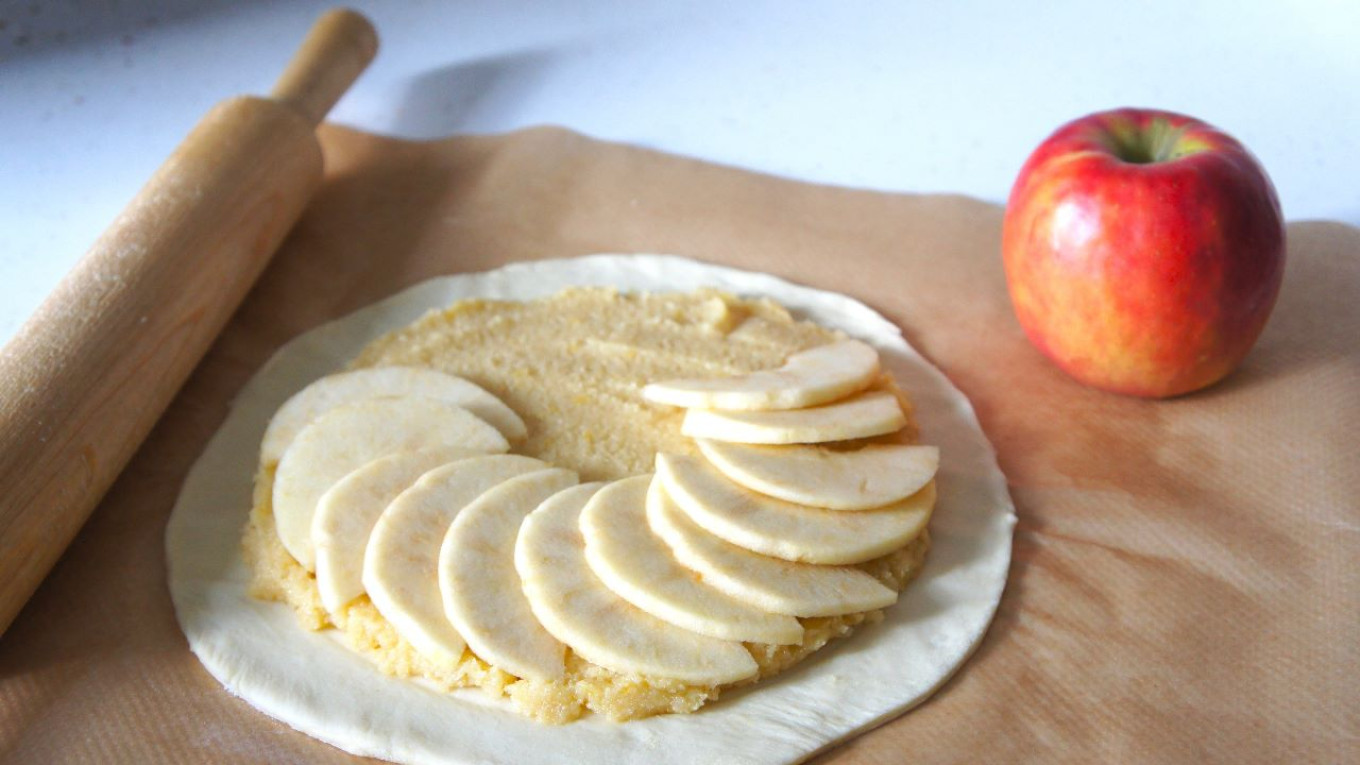
- Pour 2 tsp flour into a large bowl and lightly dust the sliced apples in it.
- Gently place the apples in a circle on top of the frangipane.
- Roll the remaining dough into a square and place on top of the apples.
- Cut the top layer of dough to match the circle of dough on the bottom and press the edges closed.
- Every 4-5 cm (1.5-2 inches) use the tip of a knife to cut out triangles along the edge of the dough.

- Mix egg with water or milk and brush over the surface of the cake. Sprinkle with sugar.
- Bake in a preheated oven for 30-40 minutes.
- Cool on a wire rack for 30 minutes and serve.
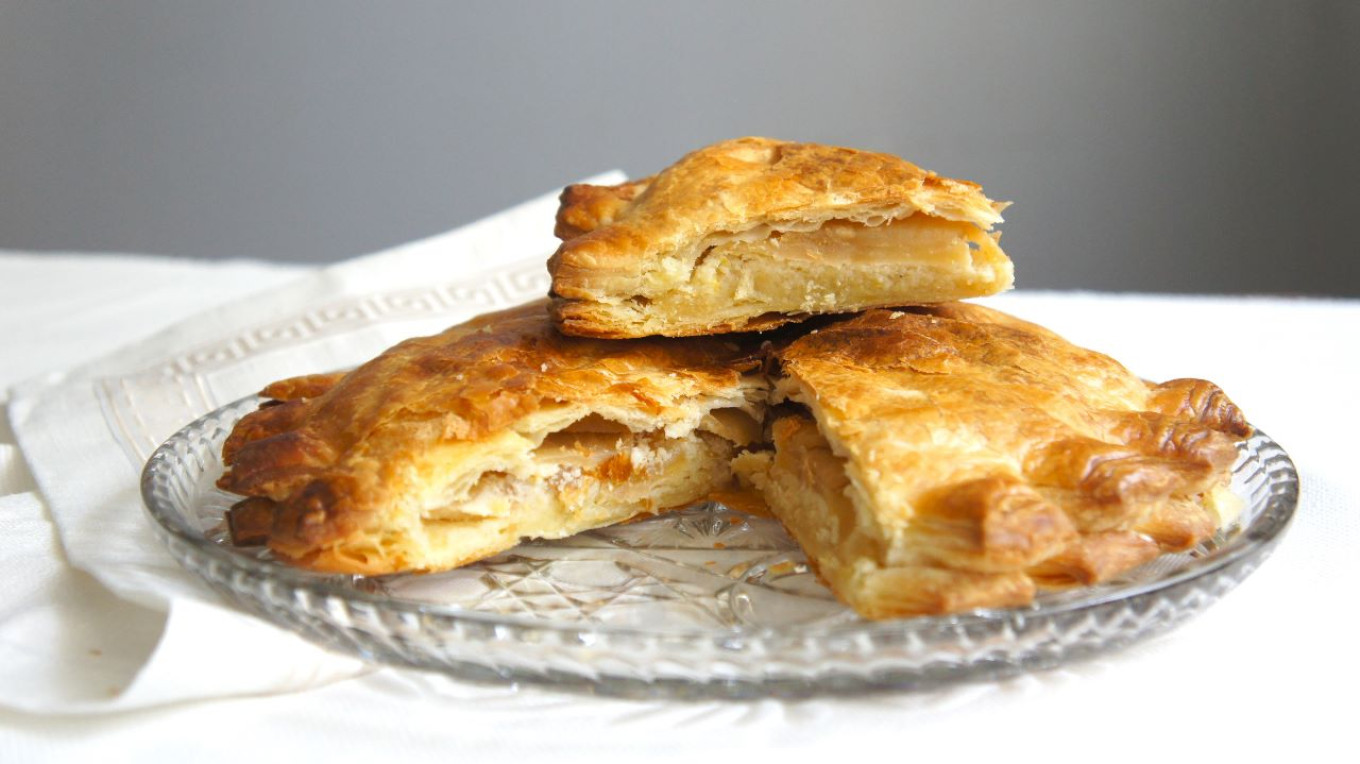
Leave a Reply